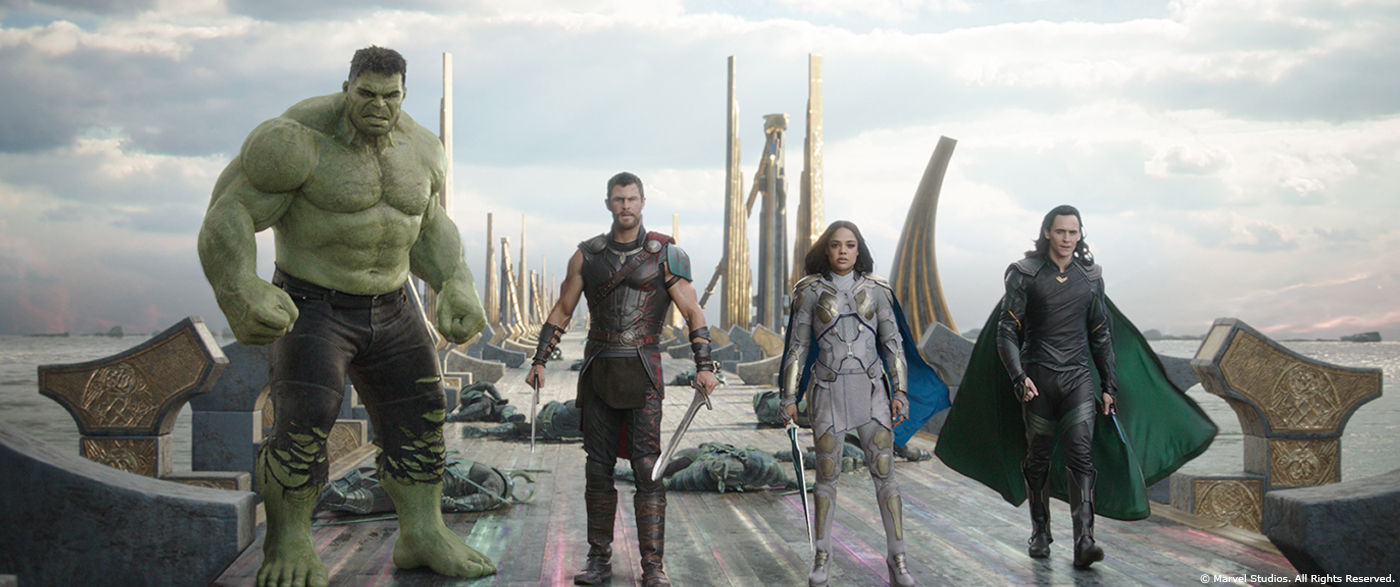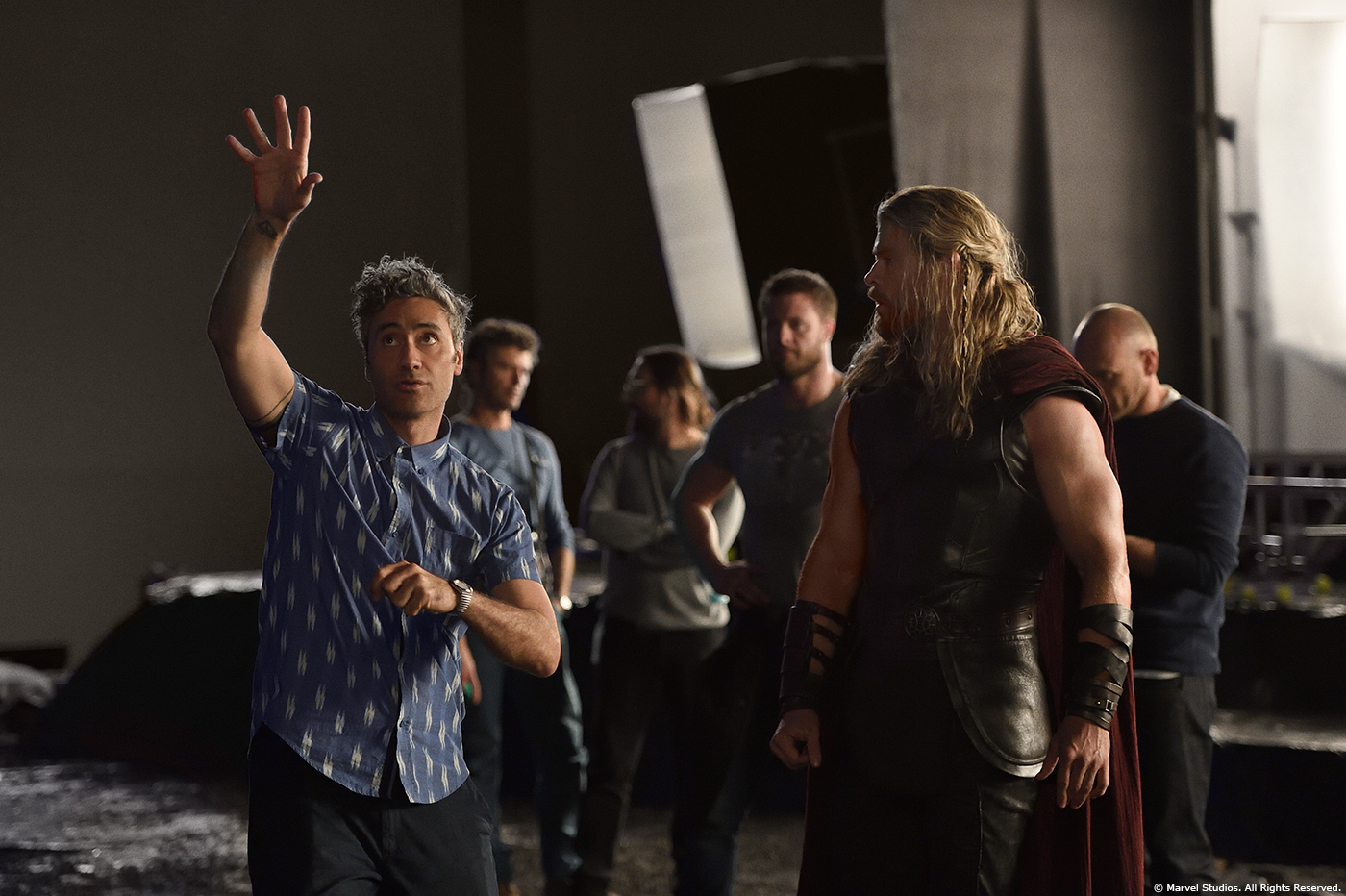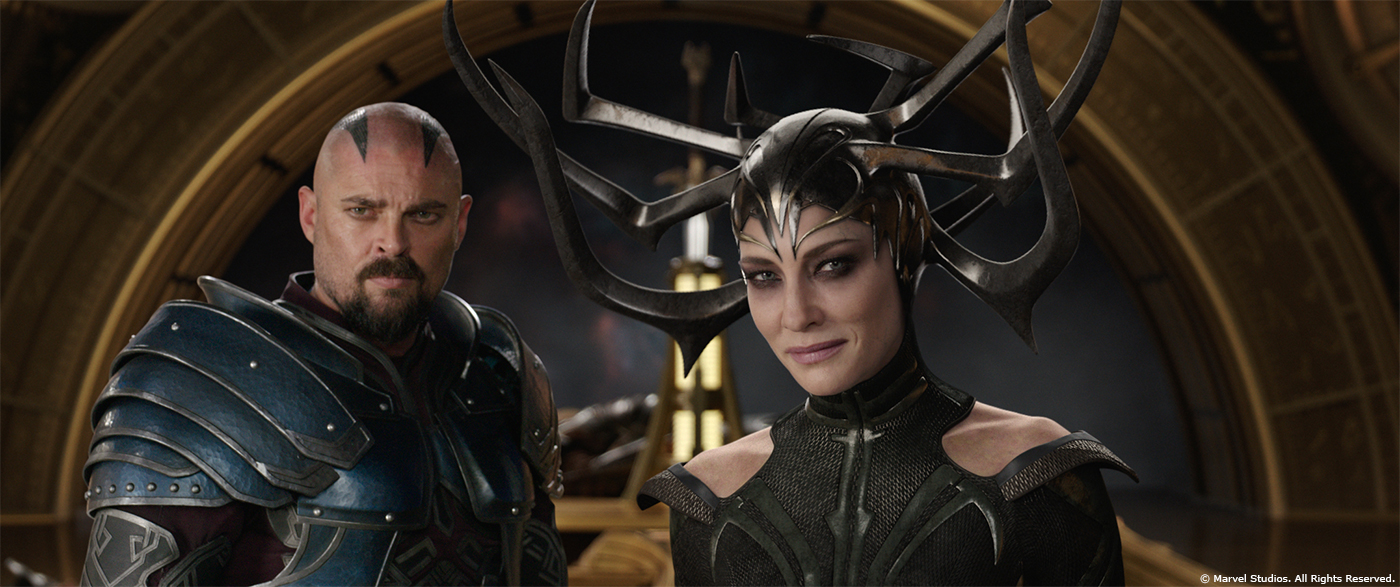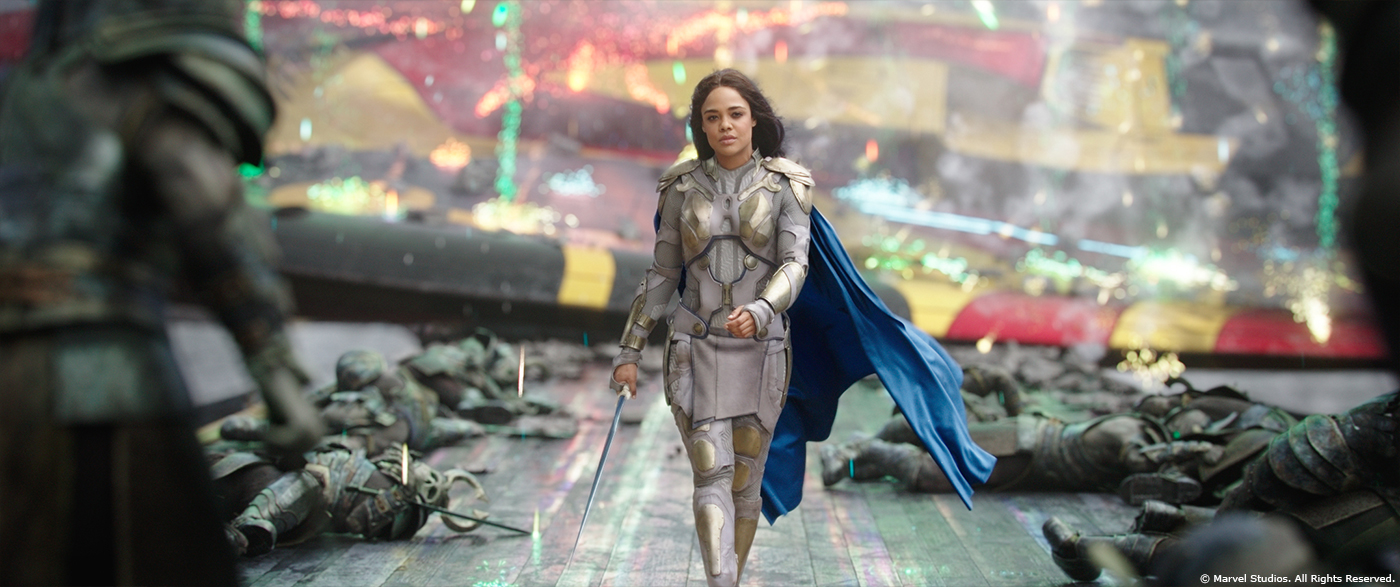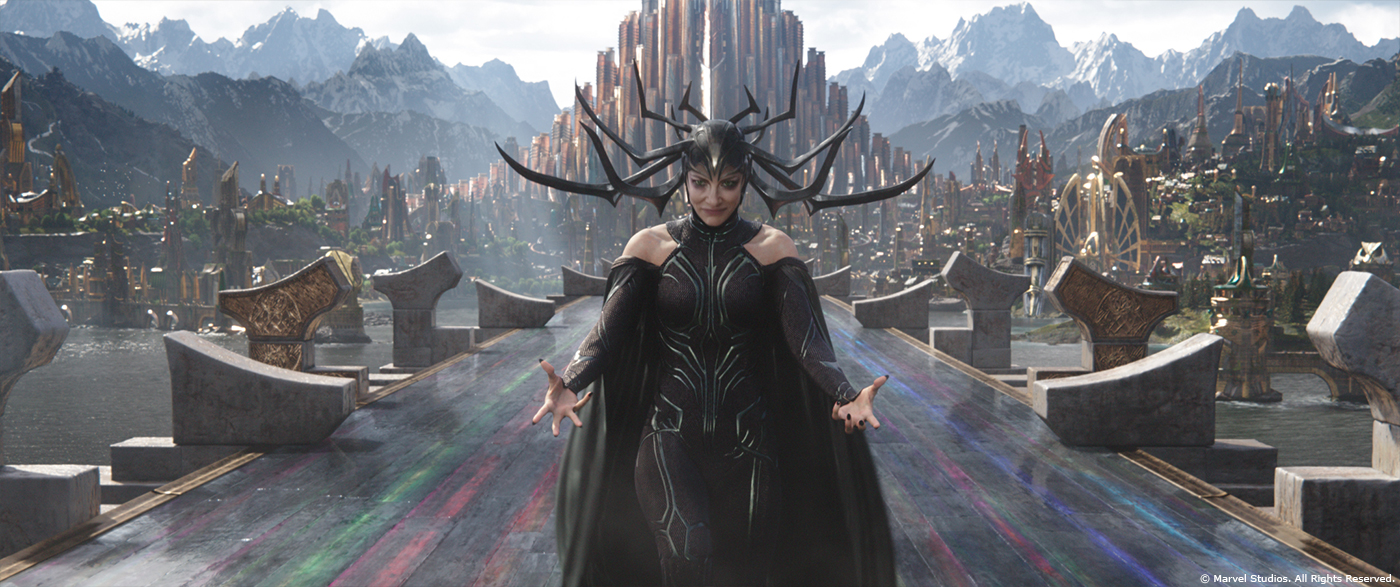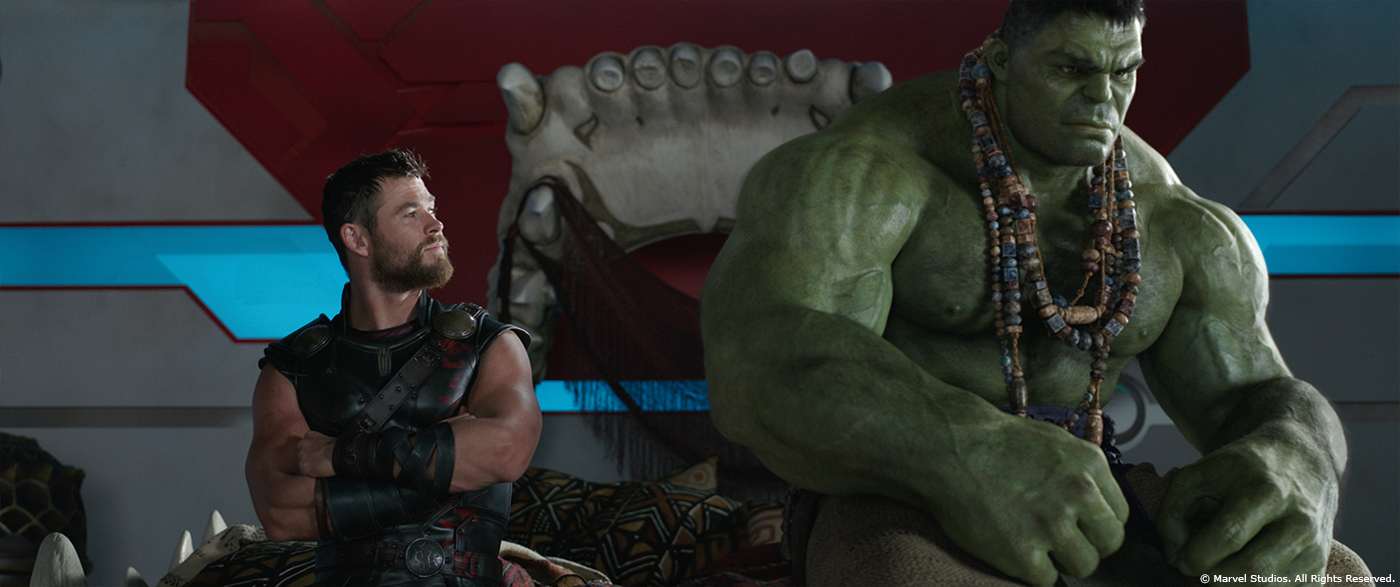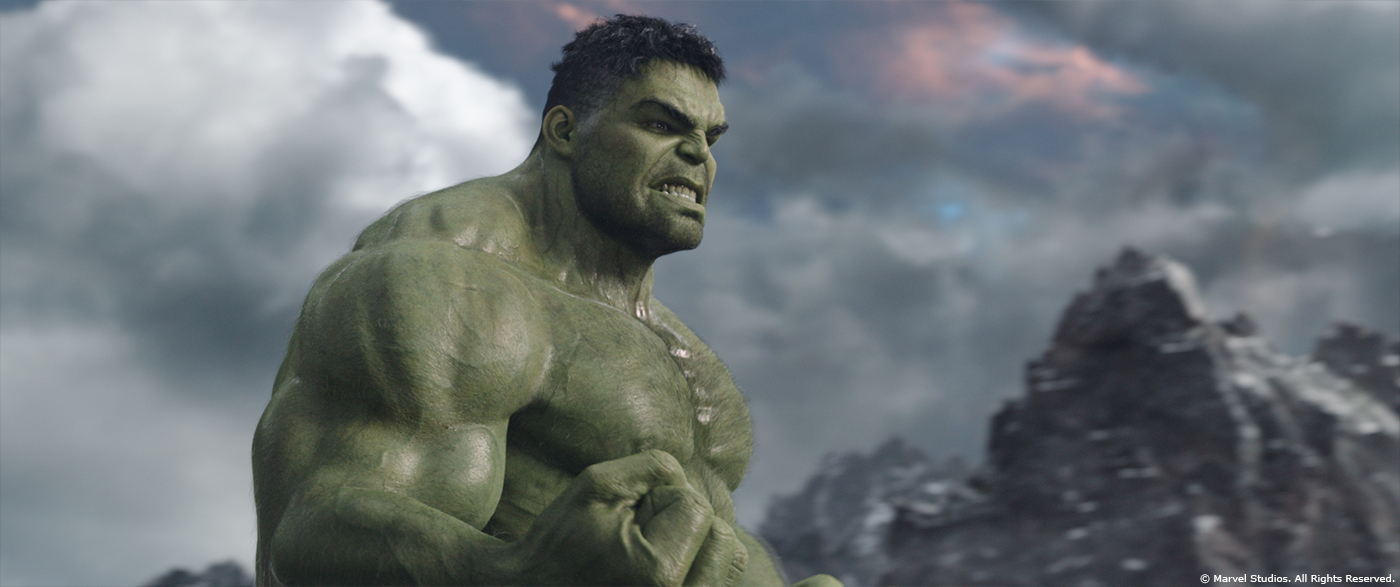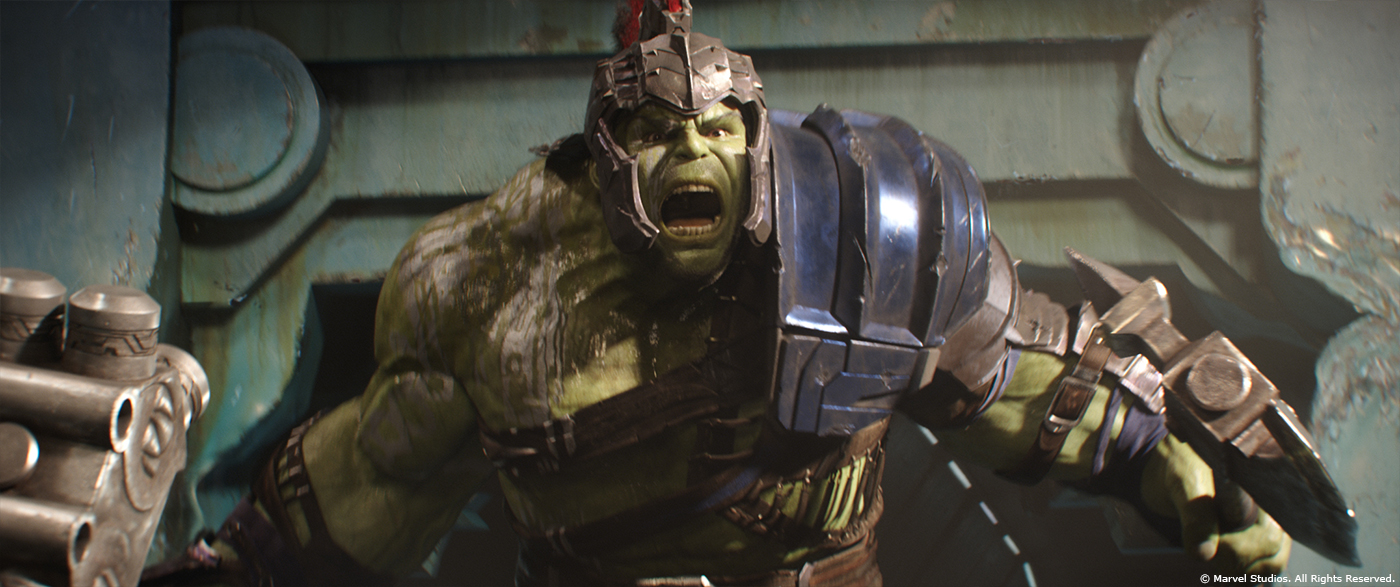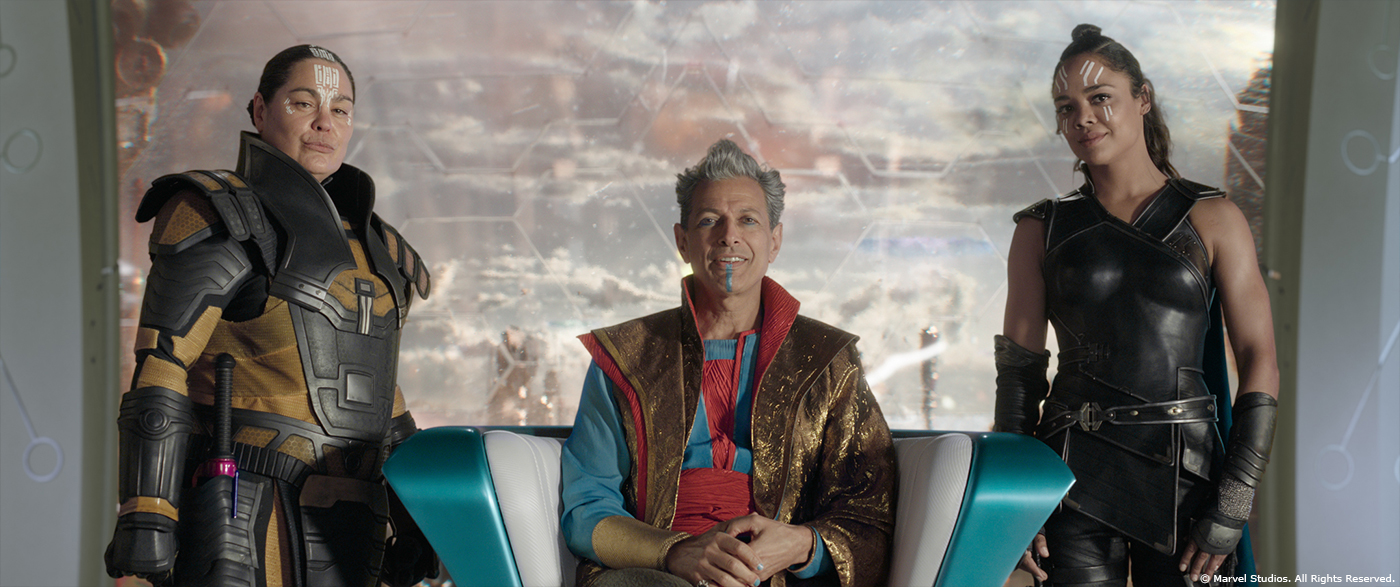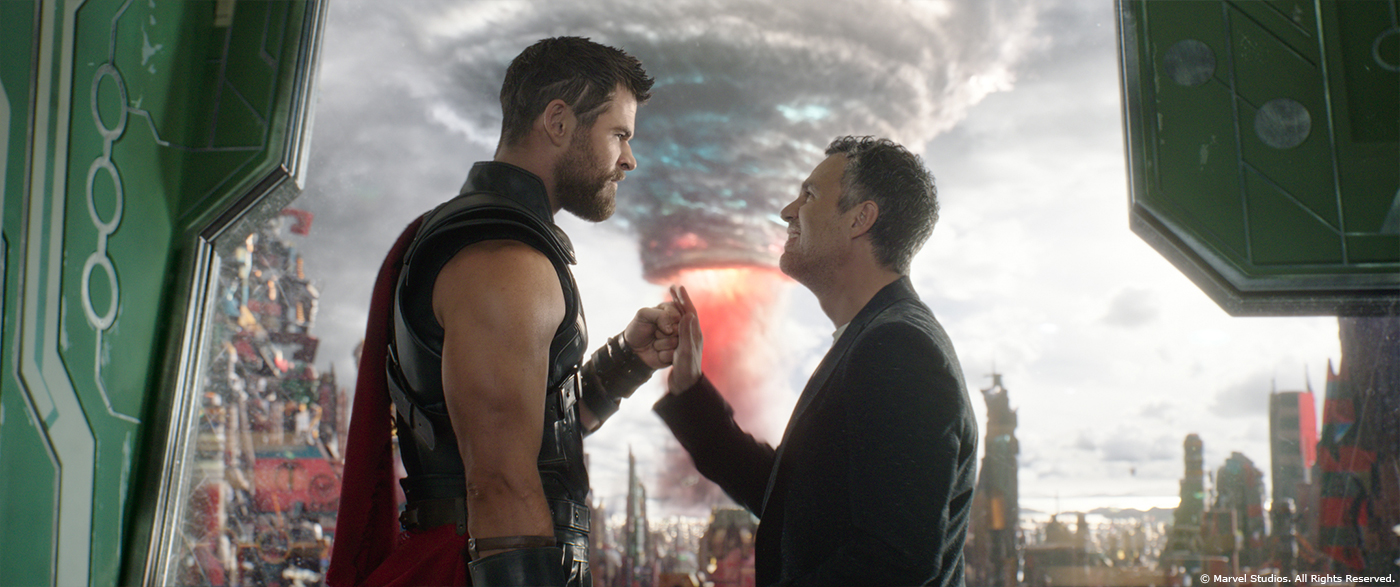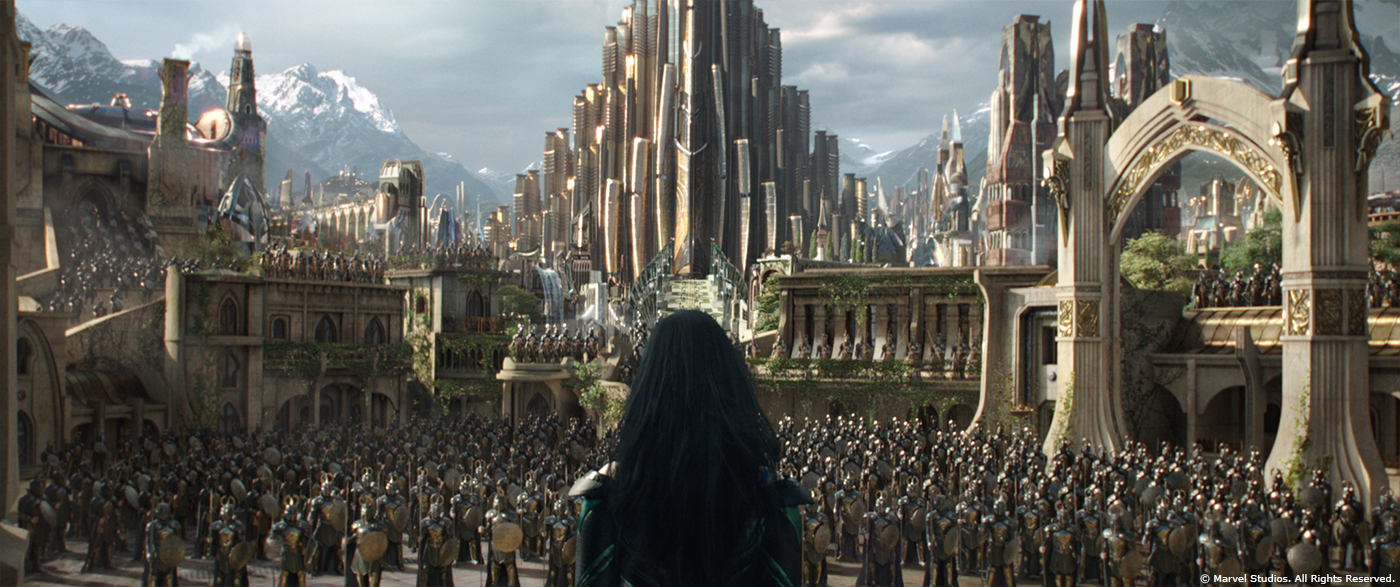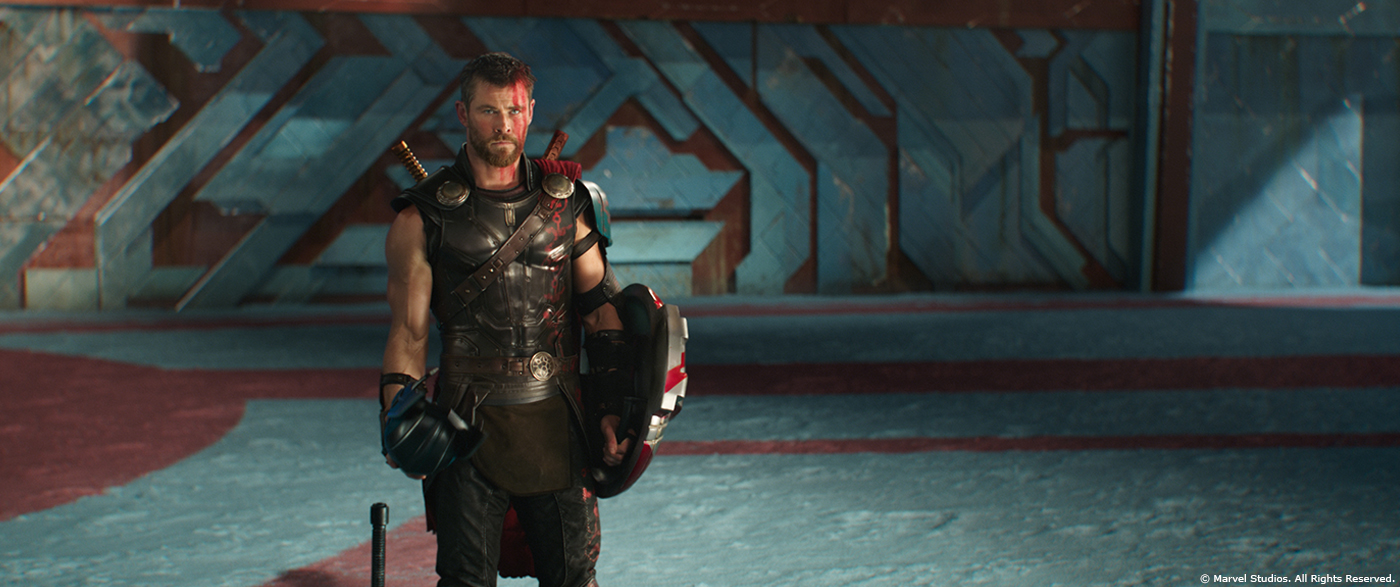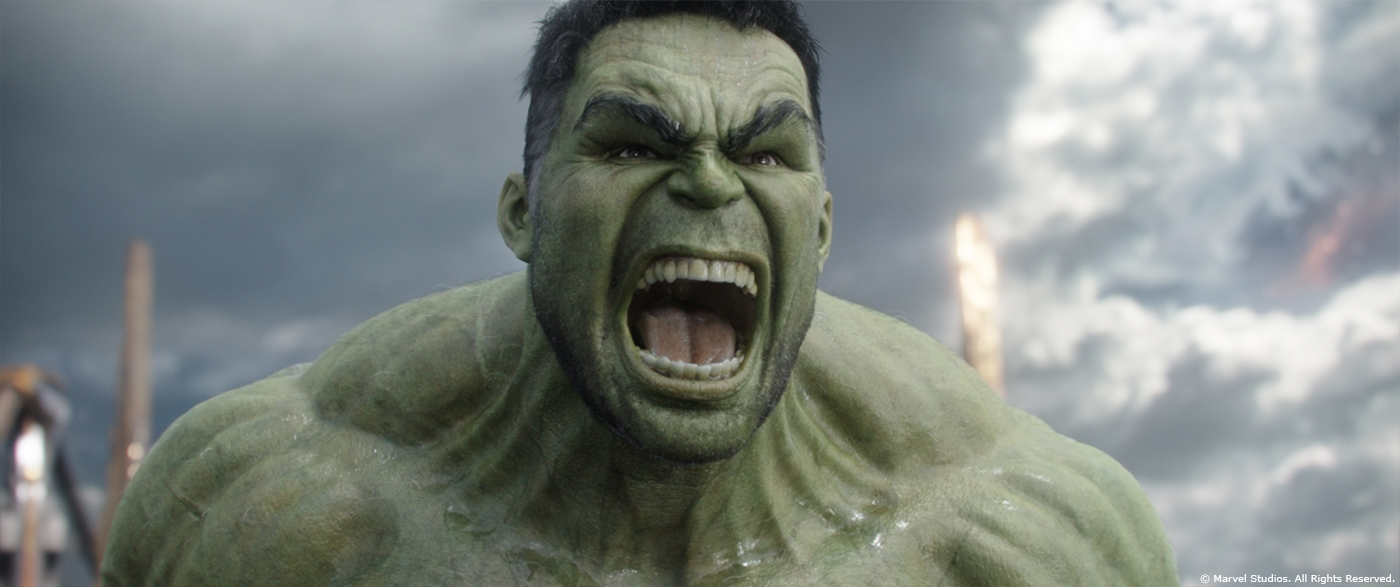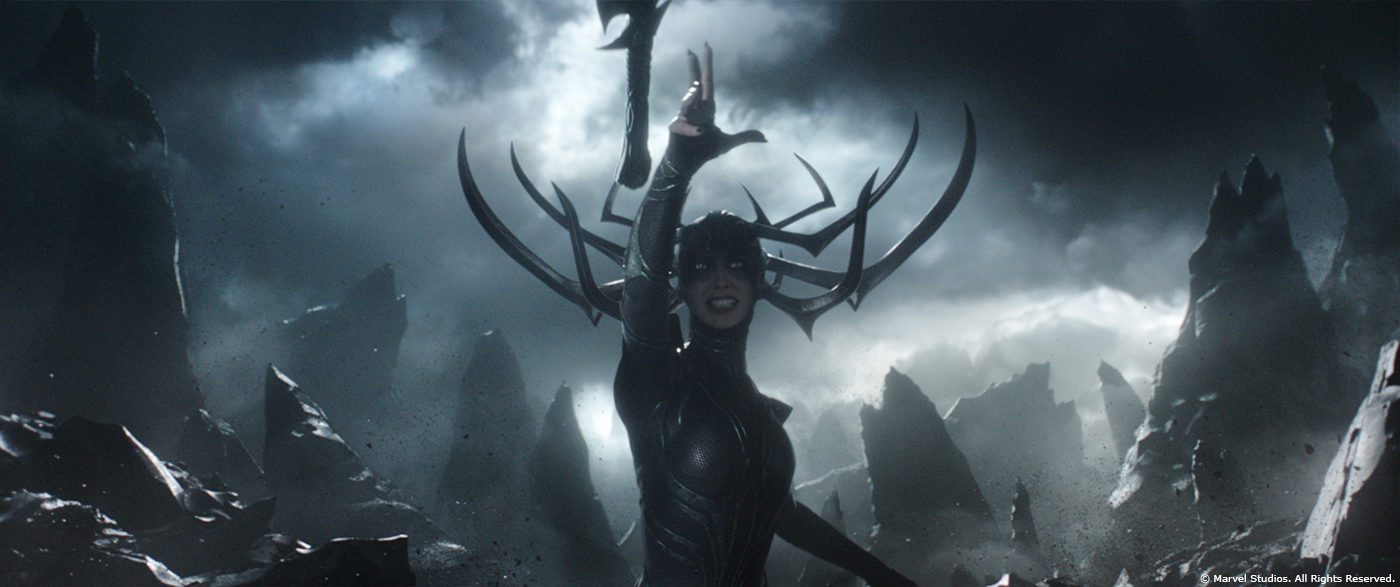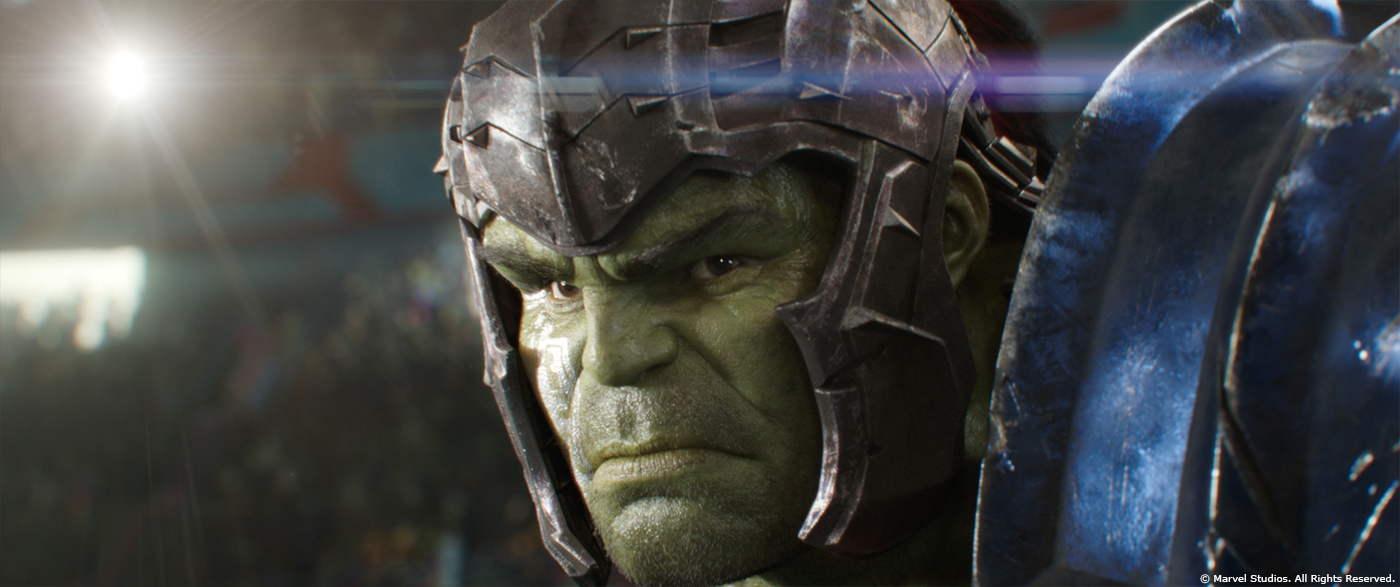In 2015, Jake Morrison explained to us about his work on ANT-MAN. He is talking to us today about his fourth film with the god Thor.
What was your feeling to be back in Thor universe?
Very nostalgic to begin with! And then almost immediately that feeling disappeared as I started to understand what a completely different animal this movie was going to be.
How was the collaboration with director Taika Waititi?
It was great. Taika’s a very creative individual and is an accomplished artist too so it was very easy and swift to speak in terms of visual specifics, we could just sketch something out whenever necessary. We even used cineSync in our internal postviz reviews.
Taika’s also a very collaborate individual, and he really trusts his Heads of Department so he allowed everyone to bring all of their abilities to the table – if I had an idea on how to improve a shot or sequence he was always open to hear it and, if he liked, we would do it!
That’s his first big VFX feature. How did you help him with the visual effects?
From the very beginning there was an understanding that although we were working on a visual effects heavy blockbuster we would work to make all of the technology completely transparent. Taika likes to shoot in a very improvisational style, long takes in a series, while he’s often standing right behind the camera throwing new lines and ideas at the actors and some of the funniest moments in the film are improv based on the strong bones of the script.
It was clear that Taika wasn’t going to allow for an army of technicians to run in and reset mocap markers, camera etc. after a take so myself and our VFX Producer, Cyndi Ochs, worked hard to make sure the technology was as invisible as possible to Taika. We even went so far as to build the motion capture cameras into the sets themselves to allow ensure that all of the performances happened together, rather than trying to capture one half of a performance on the set and then a second half in a separate motion capture volume.
Did you received specific indications and references for the VFX?
We had strong keyframe artwork from Marvel’s Visual Development team, headed by Andy Parks but after that it was genuinely blue sky territory; we were able to create anything we could think of!
How did you approach this show and organize the work with your team?
We initially broke the film down into four key vendors who were with us from the beginning and then as it became clear that the film was going to be a) enormous and b) continually evolving, we started to increase our VFX vendor count… By the end of the movie we had 18 separate vendors across the planet working on just under 2,700 shots.
Can you tell us how you choose the various VFX vendors?
The casting for VFX vendors is actually one of the most important tasks on the movie; the wrong casting can be disastrous but the right choice leads to some truly innovative visual effects work. I’d worked with many of our vendors before, but for some others it was a first time.
How did you split the work amongst these vendors?
Broadly speaking the film required three disciples in varying amounts: character work, environments, and large scale destruction / simulation, but usually all three at the same time!
Collaborating with ILM again on our brand-new talking Hulk was a no brainer, for example. Considering the large amount of character animation in the final battle, we thought Framestore would be a good home for the work. But for some of the stranger sequences, like the ‘slow-time’ Valkyrie Flashback, Rising Sun Pictures’ extremely strong simulation and physics background coupled with their track history doing the ‘Quicksilver’ sequences in the X-MEN films seemed to be a good fit. Thankfully, it was!
Can you tell us more about your collaboration with their VFX supervisors?
Very strong and very creative. Taika’s insistence that we should always keep pushing to find the most interesting, beautiful and strongest visual storytelling possible meant that all off our supervisors were challenged to come up with new ideas. We’d always ask for a version that satisfied the initial brief, but they were encouraged to think outside the box and provide alternatives. As someone who was an artist creating shots for a long time, I’m a strong believer in tapping into the resources of the individual artist – there is literally no one who cares more about an individual shot than the person who has been working on it for weeks, or months, and their ideas about how to improve it should be listened to!
The vendors are all around the world. How did you proceed to follow their work?
We basically chased the sun! By the end of the movie, with 18 vendors, we would start our days with Europe, move west into the UK then the East Coast of the US. After that, Vancouver, Los Angeles and then at the end of the day we would finish with Australia, moving from Sydney through Melbourne to Adelaide. We tried to make the sensible for everyone, on a cycle of every other day for most vendors to allow for time to actually do the work but, of course, at the end of the movie we were talking to whomever needed the feedback whenever it was required!
Can you tell us more about the previz especially for the final act?
The previs and postviz on this movie was a huge undertaking. Our Visualizsation Supervisor, Shannon Justison was with us in Australia where we shot the movie and continued into post when we returned to Los Angeles. To say the Final Battle was an evolving document is an astonishing understatement! With such a massive amount of fully CG, storytelling-heavy, shots we needed to lay them out early on.
As the edit changed, we updated the shots to reflect the new direction. For example, the first version of the third act had the final battle taking place on the ‘Stone Arch Bridge’, a different bridge to the north of Odin’s Tower. We prevised the entire sequence, even creating a genuinely adorable 8-bit-style ‘overview’ of the complex choreography required to get all of the characters into place for their respective moments. Naturally, our Production Designer created a huge section of ‘Stone Arch Bridge’ for us to shoot on in our large blue screen backlot.
In post it was decided that it would be much clearer storytelling if the Asgardians were on the Rainbow Bridge with the Observatory – and its implied safety – in view. This meant taking every single frame of footage we had shot with our 300 extras and rotoscoping them off one bridge and putting them onto a very different one! Very complicated, very time-consuming of course, but it helped the storytelling!
Of course, a change like this had a huge effect downstream too; when it came to finals, Framestore had to do the pixel-perfect version, once again cutting out every single Asgardian and replacing the ground they stood on.
The movie is full of CG characters. How was simulated their presence on-set and their interactions?
Generally speaking if the character walked and talked, we had an actor there. This ethic flowed from Taika’s love of working with actors and created some brand new challenges – Taika is fond of appearing in his film, Hitchcock-style, often in a cameo role. We began to realise just what that meant very early on; Day One of Principal Photography had Taika in a mocap suit with stereo head-mounted cameras playing an 18’ tall Fire Demon called Surtur! Ultimately the character was re-voiced by Clancy Brown in post, but this approach set the tone for the overall shoot as it became clear that Taika’s initial plans to cameo might be expanding.
Ultimately Taika ended up inhabiting the digital body of ‘Korg’, a 7’6” rock monster that would ultimately become Thor’s best friend in the movie, as well as a fan favourite. The freedom that we had been asked to provide on-set flowed into post as Taika would regularly think of a line that Korg could use as an upgrade to an existing joke. Having one of the mocap actors with us in the Edit Suite for the entire run of post-production offered some significant options, opportunities and challenges for our vendors.
Which CG character was the most complicated to create and why?
In my opinion Korg is a masterclass of mocap performance, animation and technical animation brought to life by Framestore and Luma Pictures. The creature is made of thousands of individual rocks that must never squash or stretch, only move against each other like tectonic plates. If any of the rocks changed size it immediately looked like the character was made from Latex, but if the rock moved in too much of a ‘technical’ way it looked like Clockwork.
Add to that the fact that the character has to deliver some fiendishly complex comedic lines – try “It sounds like you had a special and very intimate relationship with your hammer, and that losing it was like losing a loved one” – and it’s actually being performed by the Director of the movie and you have a very modern challenge!
Can you tell us more about Hulk?
We essentially re-built Hulk from scratch while leveraging the enormous experience and braintrust that the team at ILM had. Reasoning that because Banner had been stuck inside Hulk for two years, and that Hulk could now speak, we figured that it would be reasonable for Hulk to look more like Mark Ruffalo – perhaps he had osmosed into Hulk! Pushing us in that direction also helped the facial performance; when Mark delivered lines as Hulk it was much more organic. To help with the design process, we ended up going back to some of the initial designs that Ryan Meinerding, the head of the Visual Development department at Marvel, had done for the first AVENGERS movie. Creative direction on that movie had pushed Hulk down a different, more brutish, path, but we thought that now would be a good time for him to return to his roots!
This began an exhaustive iterative process where ILM would update the model, show us a turntable and several facial expressions, then we’d review with Ryan, do paint-overs and reshape the skull and facial features in 2D and then pass that back to ILM who would integrate the changes into the 3D build. This process lasted for month but the results are on the screen and we feel this is the most successful Hulk that’s been created. On top of that, of course, he is required to tell jokes too… No pressure!
We discover a new planet, Sakaar. Can you tell us more about its design?
Sakaar is 100% inspired by Jack Kirby’s art style. Kirby always filled a page up with his designs – equal parts light and shade – so much so that the colourists would regularly just colour a single character in with a single colour, relying on the visual detail that Kirby had created. This created a monochrome character, building or prop when you only have a single one in a comic book panel, but when you had several characters together, each coloured differently, it took on a riotously vibrant look. Expanding that idea to the city-level creates an even more crazy image, more ‘favelas’ than ‘Tomorrowland’.
How was created this brand new place?
We created it piece by piece, finding the design as we went. We knew we wanted Sakaar to be a very different world from any that the audience had visited. The ‘world’ is actually created by multiple wormholes that surround it, sucking space debris in from across the galaxy and spitting it out into one large ball of junk. The wastelands of Sakaar are distinct from the city centre which is ‘wormhole free’ and has the centrepiece of the Grandmaster’s palace, replete with the giant ‘Mount Rushmore’ facial sculptures.
Can you tell us more about the design and the creation of Asgard?
The audience had been to Asgard before in both of the prior THOR movies so we knew roughly the structure but Taika had new ideas about how the planetoid should be presented. Key to him was the idea that the audience needed to feel the understand the scale of Asgard better – less of a sprawling metropolis and more of a harbour town. It was important to the filmmakers to feel that there were no Asgardians left behind, tucked out in the distant fields and valleys!
What was the real size of the sets for Sakaar and Asgard?
They were huge! In fact one of the challenges with this film was the scale of the sets. Having such large sets obviously means that the amount of detail has to be limited practically to get the sets made on time. Given that Taika likes to improvise and work out a scene on the fly that meant we shot into areas of the sets that were unplanned. That added significantly to the complexity of the VFX work because we regularly had to add additional detailing to the sets and, in many cases, the vendors found it easier to replace to practical sets completely and swap them with an enhanced digital version of the same. This is where our LIDAR and texture photography team came into their own, we never left a set or location without a full digital copy of it.
Hela can summons an army and her big wolf Fenris. Can you tell us more about their creation?
The ‘Catacombs’ scene arrived late in the schedule. The filmmakers felt that we needed to explain more about the Eternal Flame, Hela’s Army and Fenris so a new scene was created. The scene was shot during additional photography in Atlanta in July, just weeks before our initially proposed VFX completion date. The Art Department created a small piece of the Vault from the first Thor film and then the rest of the sequence fell upon the visual effects department’s shoulders.
There’s a significant number of shots where Trixter in Germany are keeping Cate Blanchett’s face, shoulders and hands and creating everything else – the environment, her suit, her army of undead and her 35’ tall mega-wolf, Fenris.
The final act is a massive sequence full of creatures, FX and destructions. How did you approach a big sequence like this?
I approach something as complicated as this in a piece-by-piece manner. The best thing to do is just to break down the scene into it’s component pieces, usually ‘moments’ or mini-scenes and then mentally group them that way, knowing that there will be significant changes.
The most useful internal question to ask (inner-voice, by the way!) is ‘why’. If you don’t know how each individual shot advances the story of the movie then, firstly, you can’t expect to be able to steer a visual effects vendor towards a good landing with the director and studio and, secondly, there’s at chance that shot isn’t necessary. Understanding the flow of the action and the need to the mini-scenes allows you to be in a much better place to be able to suggest new, more efficient and hopefully better solutions to the storytelling.
Which sequence or shot was the most complicated to create and why?
There are some truly epic shots throughout the film but the Valkyrie Flashback sequence remains a standout for me. Combining a ground breaking circular lighting / shooting rig that involved 145 motion controlled DSLR flash-guns mounted on a 60’ wide steel hoop, and a Phantom 4K Flex shooting at 1000 frames per second – not to mention reflooring a Stage to make it horse-friendly and a stunning amount of previs and techviz to plan each and every camera position to allow us to create shots with 15+ horse-riding Valkyries piece by piece. And that’s all before we got into post and starting adding CG wings on the horse, designing the Hel environment and adding all of the additional armies, portals and Hela weapons.
Taika trusted me with directing the shoot for this sequence and it remains one of the pieces of the film I’m most proud of.
What was the main challenge on this show and how did you achieve it?
Keeping all of the plates spinning around the world! It’s a challenge to work with 18 vendors and to make sure that they are all delivering content that will fit together in such an epic movie.
If you add into that the filmmakers’ desire to continue to strive for perfection – even if it means throwing away entire sequences and reshooting them – then one really has to stay on one’s toes. I like to think that I get better at thinking creatively under pressure on every movie I do. This one certainly pushed that skill forward!
What is your best memory on this show?
At the end of the day, a film is just the sum of its parts and that is people, not computers. Creating an extended family and a sense of camaraderie both during our shoot in Australia, and into post where our extended family grew to a quite enormous size, is part of what makes this job so satisfying. Working hand-in-hand with the best creative and technical people across the planet is quite the reward.
How long have you worked on this show?
2 years! Probably time to stop now…
What’s the VFX shots count?
Nearly 2,700 shots, I believe about 98% of the film passed through the Visual Effects Department’s hands.
What was the size of your on-set team?
Huge! The requirements for two complete Motion Picture Units and a full complement of Motion Capture, Virtual Production and LIDAR / texture and prop scanning was enormous. Each and every one of the team was integral to the final product and I hope they’re as proud as I am.
What is your next project?
A nap! 😉
A big thanks for your time.
© Vincent Frei – The Art of VFX – 2017


